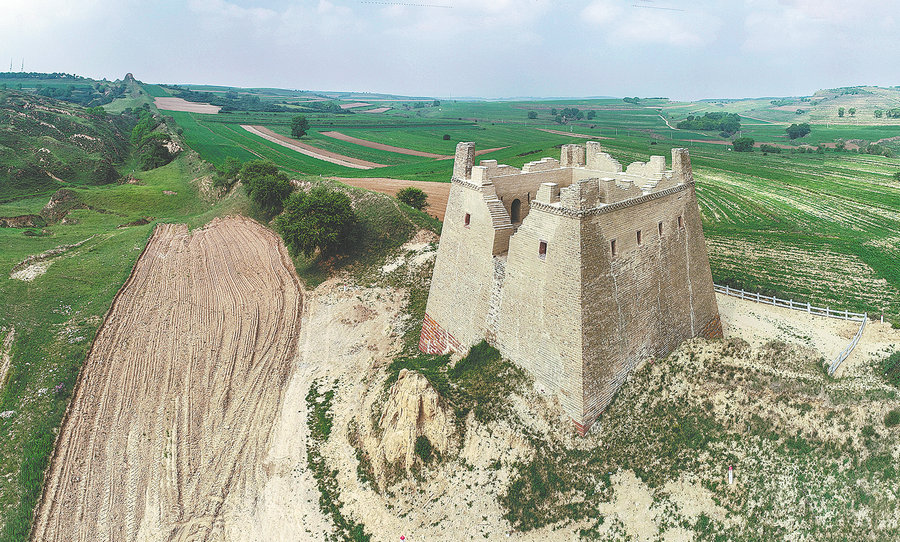An epic bulwark


The Ming Great Wall is in relatively better shape than the sections built by other dynasties. Some portions are still magnificent, like the Badaling section in Beijing, which has hosted many world dignitaries, including former US president Richard Nixon and the late Queen Elizabeth II.
"Apart from some beacon towers, some sections of the Great Wall, despite the vicissitudes, still appear tough and glorious after so many years, which is really touching to see," he says.
In Alshaa League, Lei used drone cameras to capture the breathtaking beauty of the three lines of the Ming Great Wall.
Alshaa League is also famous for the section built under the Han Dynasty, especially in Juyan, a military stronghold 17 km southeast of Ejine Banner.
Running through a bleak desert, the fortifications, including beacon towers and castles for stationing troops, are well-preserved.
During an excursion in 1930, Swedish archaeologist Folke Bergman unearthed in Juyan more than 10,000 bamboo slips dating back to the Han Dynasty — most of them are military archives, while the rest are books, private letters and calendars.
These bamboo slips piece together the defense system of the Great Wall, as well as social lives of local people, says Jing Xueyi, director of the Alshaa League cultural heritage bureau.
Another major portion of the Great Wall in the league was built under the Western Xia regime (1038-1227).
Facing threats from the Liao in the north, the Jin in the northeast and the Song (960-1279) in the east, the Western Xia rulers erected the bulwark against rivals.
Since the Han Dynasty, Alshaa League has been an area of overlapping agricultural and nomadic cultures, especially with the involvement of the central government of many dynasties, whose troops and farmers came and stayed there, Jing says.
Despite its pronounced military role, the Great Wall in Alshaa League symbolized order instead of chaos in peacetime, which covers a greater part of history, Jing adds.


















